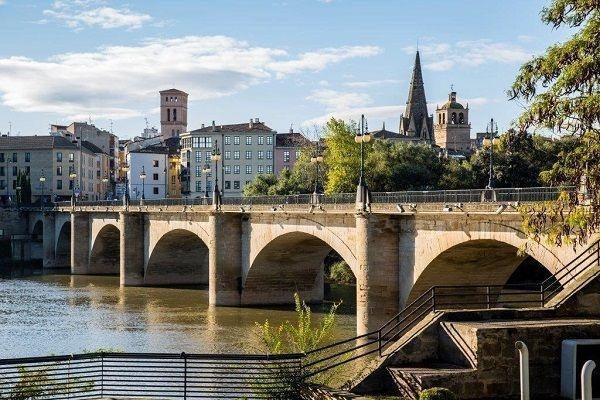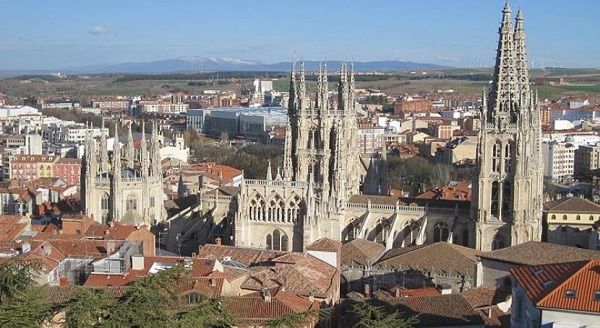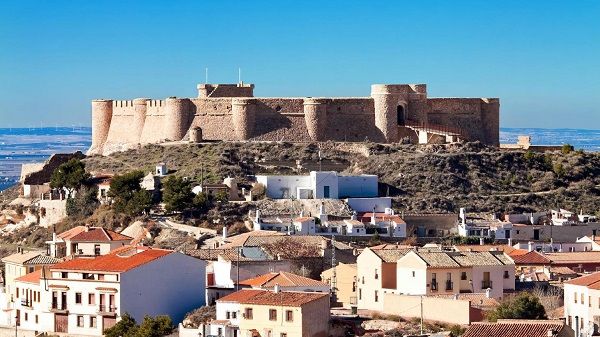Driving to Benidorm from Bilbao or Santander
Driving to Benidorm from Bilbao or Santander - Planning a road trip to Benidorm from the North of Spain? Taking the Ferry from the UK to the North of Spain instead of France cuts down considerably on the driving time.
Details of ferry crossings can be found here.
The ferry ports of Bilbao and Santander are only 91.8 km apart and around 1 hour 10 minutes driving time on the A-8 so the routes from either port is basically the same.
Driving to Benidorm from Bilbao or Santander - These are the two most popular routes.
Route 1 via Zaragoza
from Bilbao ferry 7 hours 12 minutes 775km, from Santander Ferry 8 hours 857 km
This route takes you to Zaragoza, then onto Valencia and finally to Benidorm. This route does contain toll roads.
A good place to stop if you have a caravan or motor home is the Sobradiel, Autopista Vasco-Aragonesa - 24-hour service area. Completely free. 24-hour bar. 24 h petrol station situated just outside Zaragoza GPS : N 41°43’49.7964” W -1°1’52.5” 41.730499,-1.031250
Suggestions for a more relaxed journey.
Day 1
Santander - Drive for about 1 hour
to
Bilbao - Drive for about 1.5 hours
to
Logroño - Drive for about 2.5 hours to Zaragoza
Logroño is a municipality in the north of Spain and the capital city of the autonomous region and province of La Rioja. It is also the region's most populated town (almost half of region lives here). The River Ebro crosses Logroño . Logroño is a city rich in history and traditions which have been preserved since the Middle Ages.

Zaragoza
Stay overnight
Zaragoza is the capital of northeastern Spain's Aragon region. Overlooking the Ebro River in the city center is baroque Nuestra Señora del Pilar basilica, a famous pilgrimage site with a shrine to the Virgin Mary and multiple domes. Zaragoza is Spains 5th largest city and well worth a visit as it’s home to lots of grand monuments, palaces and houses.
Day 2
Leave Zaragoza - Drive for about 2 hours
to
Teruel - Drive for about 1.5 hours
to
Sagunto - Drive for about 2 hours
Arrive in Benidorm
Driving to Benidorm from Bilbao or Santander - Route 2 Via Madrid
From Bilbao 775 km 7 hours 12 mins , from Santander 903km 8 hours 14 mins
Another popular route is via Madrid on the E-5 then onto La Ronda, Albacete, Alicante and finally Benidorm. This route does contain toll roads.
A good place to stop if you have a caravan or motor home is the San Sebastian de los Reyes / Madrid
GPS: N 40.59032, W 3.58173 N 40°35'25", W 3°34'54"
or
Area de Albacete Albacete / Castilla La Mancha (motorhome parking)
GPS: N 38.97690, W 1.85236 N 38°58'37", W 1°51'08"
Good places to stop for a more relaxed journey
Day 1
Santander - Drive for about 1 hour
to
Bilbao - Drive for about 1.5 hours
to
Burgos - Drive for about 2.5 hours to Madrid

Burgos, a provincial capital in Spain's autonomous community of Castile and León and is famous for its medieval architecture. Its most recognizable landmark is the French Gothic Cathedral of St. Mary.
Madrid
Day 2
Leave Madrid - Drive for about 2.5 hours
to
Albacete - Drive for about 2 hours to Alicante

Albacete is located to the Southeast of the Central Meseta, in the La Mancha de Montearagón region. It is a modern capital and one of the most important hubs of communication, commerce and industry in the country
Alicante - Drive for about 45 minutes
Arrive in Benidorm
There are two ways to pay for tolls: with card or cash manually, or electronically. On a toll road you are generally required to take a ticket from a booth when you enter the motorway, and then settle the amount of the toll at another booth as you exit, which will be determined by the ticket.
You can get toll prices HERE
The above are the easiest routes there are of course lots of other variations depending upon how quickly you want to make the journey or if the journey itself is part of the holiday with various over night stays at points of interest.
If you do not fancy driving then why not take the train - London to Benidorm
Driving to Benidorm - Driving in Spain Tips
You’ll be driving in the opposite direction, don’t forget that you’ll be driving on the right and anti-clockwise around a roundabout. You should give way to the traffic already on the roundabout.
Carry the correct documents and certain items with you at all times.
Valid UK driving licenses will be accepted in Spain but you must ensure you have at least third-party cover. You should automatically have this with your UK insurance but it is always best to double check.
Make sure you have the following on you at all times:
- Valid driving license - You can drive in Spain on your full UK driving licence (provisional licences are not valid for driving in Spain). Driving licence rules will stay the same until 31 December 2020, after that time international driving permits may be required. Check HERE
- Proof of insurance - If you are taking a vehicle abroad that you’ve hired or leased in the UK, you’ll need a VE103 certificate.
- Proof of ID
- Proof of ownership (if applicable)
It’s the law to carry certain items while you’re driving in Spain – you can receive an on-the-spot fine if you don’t. This includes:
- GB Sticker or Euro plates - When you are driving with your UK registered vehicle in Spain, you have always needed to place a "GB" sticker next to your number plate.
But this will now change - When driving with your UK vehicle in Spain, on or after 28th September 2021, you will need to display a UK sticker, NOT a GB sticker.You need a sticker if your number plate has any of the following: A Euro symbol, A national flag of England, Scotland or Wales, numbers and letters only, No flag or identifier
- Warning triangle - V-16 lights to replace emergency triangles - V-16 lights will be able to be used instead of the triangles from July, but they will not become mandatory until 2026.
- Reflective jackets (if you breakdown on a motorway, you can be fined for not wearing one)
- Headlamp converters
- Spare wheel (and the tools required to change it)
Know your speed limits
- Motorways (autopistas) = 75 mph (120 km/h)
- Dual carriageway (autovia) = 62mph (100 km/h)
- Other roads = 56mph (90 km/h)
- Built-up areas = 31mph (50 km/h)
It’s also important to note that there is a minimum speed limit on motorways and dual carriageways of 37mph (60 km/h). In some residential areas, particularly around schools, the speed limit will be 13mph (20 km/h).
Make sure you don’t let your petrol get too low. Ensure you have plenty of petrol, particularly if you’re going to be driving on more rural roads. You’re unlikely to find any petrol stations open through the night and they’ll potentially be closed for a couple of hours over lunchtime too.
Unleaded = 95 octane – green pumps
Diesel = gasoleo – black pumps
You can only use your lights and horn at certain times
Don’t turn your full beam on in built-up areas and make sure you use dipped headlights in tunnels. In urban areas, you can’t use your horn but if necessary, you can flash your lights. It’s also advisable to flash your lights to warn vehicles you intend to overtake and you may notice cars doing this to you.
Wear your seatbelt and make sure children travel in the back
As in the UK, you must wear your seatbelt both in the front and rear seats. Children under 12 are not allowed to sit in the front of the car, unless it is a rear-facing seat for babies.
All children under 12 (or below 1.35 metres tall) must be in a suitable car seat


